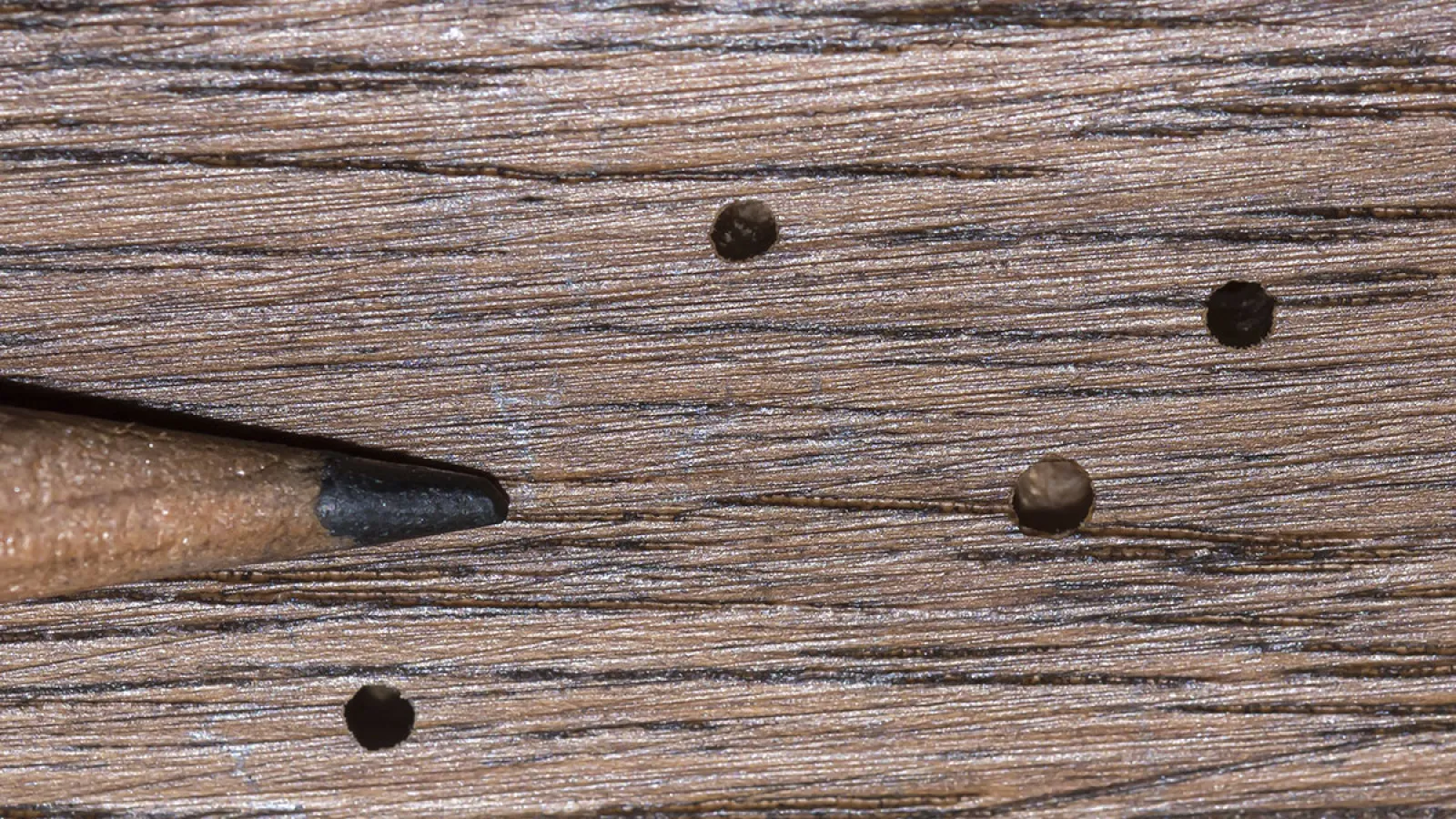
Powderpost Beetles
Latin Name: Lyctus spp
Powderpost beetles are small brown insects that range in size from ⅛ to ¾ of an inch and live between one and five years. Their life cycle can usually be completed in just one year outdoors, but they may take up to five years to fully develop indoors. Powderpost beetles complete their development inside wood and will not emerge until they become adults, meaning it may be years before you see the first signs of an infestation.
These beetles go through four life stages: egg, larva, pupa, and adult. Only insects in the first three phases will infest wood, and those in the larval stage inflict the most damage.
Their destructive abilities are second only to termites. These wood-boring insects chew tunnels inside wooden beams and then emerge through small circular holes. However, there are distinct differences between the behavior of termites and that of powderpost beetles. If you have the slightest notion that your home is infested with termites, it is a good idea to call a pest exterminator immediately to inspect your property. With powderpost beetles, this urgency is not as necessary. Their numbers do not increase as quickly, they damage wood slowly, and they usually will not threaten the structural integrity of your home. With that said, an untreated powderpost beetle infestation can decrease the resale value of your house and could spread to other wood in the home.
If you find powderpost beetles in your home, try to determine where they came from. If you have recently brought in firewood, that may be the source rather than an infestation in your home. On the other hand, if your inspection reveals small circular holes in your baseboards or any other wood around your home, it may be time to call an exterminator to do a more comprehensive inspection.
For more information or to request a free inspection, contact the trained technicians at Palmetto Exterminators.
Similar Pests: Beetles, Carpet Beetle
Photo credit: National Pest Management Association Tom Myers